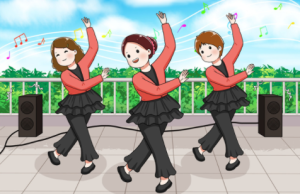Square Dancing: A Celebration of Community and Fitness, Not a Reason for Prohibition
- 广场舞百科
- 2024-04-04 14:54:27
- 44
Content:

Square dancing has become an integral part of urban culture in recent years. It's a pastime that brings people together, providing a fun and accessible form of exercise. However, the exponential growth in its popularity has also given rise to discussions about whether it should be forbidden due to the noise disturbances it causes to nearby residents. In my view, instead of prohibition, regulation and mutual understanding can address the concerns while preserving the social and health benefits that square dancing offers.
The current situation of square dancing reflects a fascinating social phenomenon. It's not just a dance; it's a community event where people of all ages and backgrounds come together to enjoy music and movement. The rhythms and steps are easy to follow, making it inclusive for everyone, regardless of dance experience. The popularity of square dancing is a testament to its ability to foster community spirit and camaraderie.
However, it is undeniable that the loud music used in square dancing can be a nuisance to those living nearby. The clash between the right to enjoy leisure activities and the right to a peaceful living environment has sparked debates about whether square dancing should be forbidden. I respectfully disagree with the idea of a complete ban for several reasons.
Firstly, square dancing is an excellent form of exercise. In a world where sedentary lifestyles are becoming more common, any activity that encourages people to get up and move is invaluable. It helps to promote cardiovascular health, improve coordination, and boost mood. To forbid square dancing would mean taking away an accessible and enjoyable workout option from many, especially the elderly, who benefit greatly from the social interaction and physical activity.
Secondly, square dancing fosters community cohesion. It provides a platform for people to meet, greet, and connect with their neighbors. This sense of community is crucial for the mental well-being of individuals and the overall health of a society. Prohibiting square dancing would isolate many individuals, particularly the elderly, who might lack other social outlets.
Moreover, the public square is an ideal place for such activities. It's a communal space where people can gather without incurring costs, which makes it accessible to all socioeconomic groups. Banning square dancing from these areas would limit the public's use of these spaces and negate their purpose as a community hub.
While acknowledging the benefits, it's also important to address the concerns of those affected by the noise. This is where regulation comes into play. Instead of a complete ban, the time and volume of music can be controlled. Designating specific times and areas for square dancing, along with setting noise limits, can strike a balance between the dancers' rights and the nearby residents' need for tranquility.
In conclusion, the square dance movement is a valuable cultural trend that promotes health, community, and cultural continuity. Instead of resorting to prohibition, we should work towards a middle ground that allows this vibrant form of expression to continue while respecting the rights of others. Through dialogue, understanding, and appropriate regulation, we can ensure that square dancing remains a cherished part of our social fabric, bringing joy and health to many without causing undue disruption. Let's not forget that the beauty of a community lies in its ability to accommodate diverse interests and find harmony even in the face of differing opinions.
免责声明:本网站上的所有文章内容均来自互联网。本网站仅在法律允许的范围内使用、分享和传播这些内容,不违反任何版权或知识产权法。如发现本站有涉嫌抄袭侵权/违法违规的内容,请发送邮件25538@qq.com举报,一经查实,本站将立刻删除。
本文链接:https://www.zhuangrou.com/gcw/6390.html



















